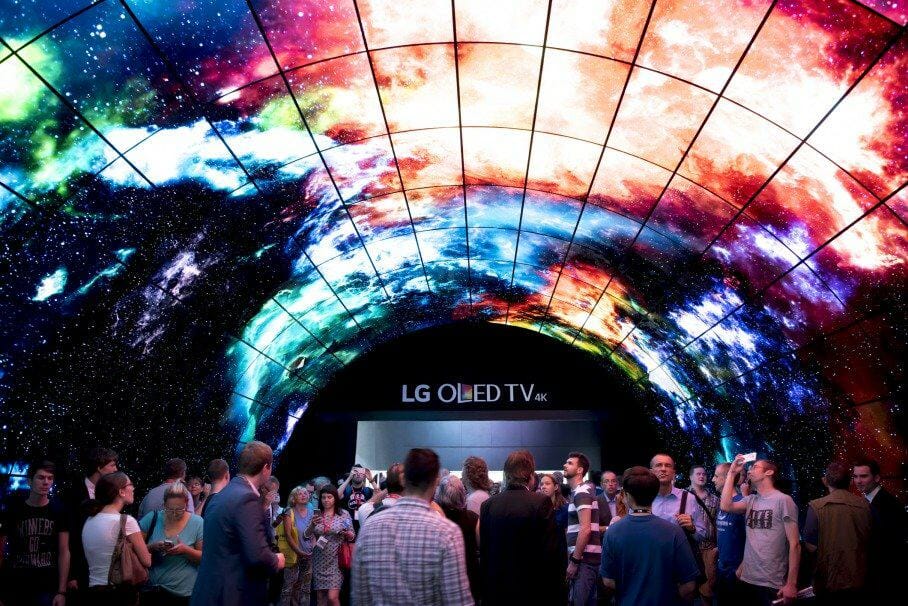Are you shopping for a TV? Then you must have heard of OLED. OLED is the newest kid on the block and by far the “best” panel type, according to many sites. However, is OLED something that you should choose? Or are traditional LCD panels, such as the IPS, still better for you? Read on to know more.
Table Of Contents
What is OLED?
Before you get confused with IPS and OLED, you should know that OLED is entirely different from IPS. If LCD panels have a backlight, the OLED doesn’t have any. Wait, what, no backlight? Then how will the images show?
What makes the OLED unique is that each pixel emits its own light. Yes, you read that right. Each pixel can completely turn on and off, which is why you can have accurate black or white images. In other words, the light is organic (that’s why it’s called OLED – the O stands for ‘organic’).
What is IPS?

There are two other LCD panels, the TN (twisted nematic) and the VA (vertical alignment). Among these three, the IPS comes in between the TN and the VA regarding response time. It’s a lot like a middle-range LCD panel. However, the IPS does have an impressive 178-degree viewing capability allowing you to have great images even from side angles.
Which Panel Type Should You Choose?
Here’s the question – which to choose? This is tough to answer because there’s no straight-cut answer, especially if you have different reasons and priorities in choosing your panel type. If you have concerns about the resolution, contrast, response time, viewing angles, price, and size, then all these things play a role in determining what panel is best for you. Don’t worry. These factors will be discussed below.
1. Resolution
The most common factor is resolution. If you ask a person what they look for in a TV, it’s usually a high-resolution display. The good news is that the IPS and the OLED TVs have high resolution. Specifically, they have 4K Ultra HD resolution, so you can choose either display. Please note that not all LCD panel displays have 4K Ultra HD resolution, so it’s best to ask the manufacturer about it before you buy.
2. Contrast
The OLED TV has infinite contrast ratios because the pixels can be black or white. If you have seen the image on an OLED screen compared to an image on an IPS screen, you’ll see that the OLED is much better.
It’s also worth noting that even if OLED is better, the IPS panel is not that bad regarding contrast ratio. The IPS and the VA offer a much better contrast ratio than the TN LCD panel.
3. Response Time
The response time is significant for people using their monitors and TVs for games. Response time refers to the time it takes for a pixel to change to different shades of grey. If you’re a gamer, you definitely want a fast response time monitor because it’s hard to react to an image when it’s delayed.
Between the OLED and the IPS, the OLED has a faster response time. It takes less than 1 millisecond for a pixel to change colors. Nonetheless, the IPS is not so bad, with a response time of approximately 15 milliseconds or 4 milliseconds if you use the overdrive.
4. Viewing Angles
Of course, if you have a big room, it’s essential to know more about the viewing angles. This is also very important if you plan on using the TV for large family and friends on movie nights where you can’t ask everyone to stay in front of the screen.
Anyway, when it comes to viewing angles, the IPS has a 178-degree viewing angle. You can have an excellent image display on the side or in front. But that’s still not the best in the market because the OLED panel is the top panel regarding viewing angle.
5. Price
This might change your conclusion if you think OLED is winning this comparison. While OLED TVs are slowly becoming more affordable, they’re not as affordable as IPS panels. IPS panels are highly available and commercialized, making the competition between manufacturers stiff. They are available at every price point so you can buy a cheap or expensive one. Besides, the IPS panel is much cheaper because it has different monitor sizes.
6. Size
Speaking of size, if you’re looking for a small or a large screen, the IPS can offer you different sizes. IPS displays range from 20 to 100 inches, giving you many different options to choose from. On the other hand, the OLED displays are either 55 or 65 inches. If you have a small room, then this wouldn’t do. Sure, there could be smaller versions of OLED displays in the future, but you probably wouldn’t be able to wait for that, especially when TV sizes are just becoming bigger and bigger.
These factors can help you decide which one is better. Don’t forget that you should also consider your personal preferences and what you plan to use the monitor for.
Conclusion
Ultimately, it’s your call on which panel you should buy. The short answer is that if you’re sensitive to the contrast ratio and the viewing angle, then it’s OLED (provided, of course, that money is no object). On the flip side, if you’re more concerned about the size and the price, then IPS panels are the way to go. And what’s great about them is even though they are affordable, they come in 4K Ultra HD resolution.




